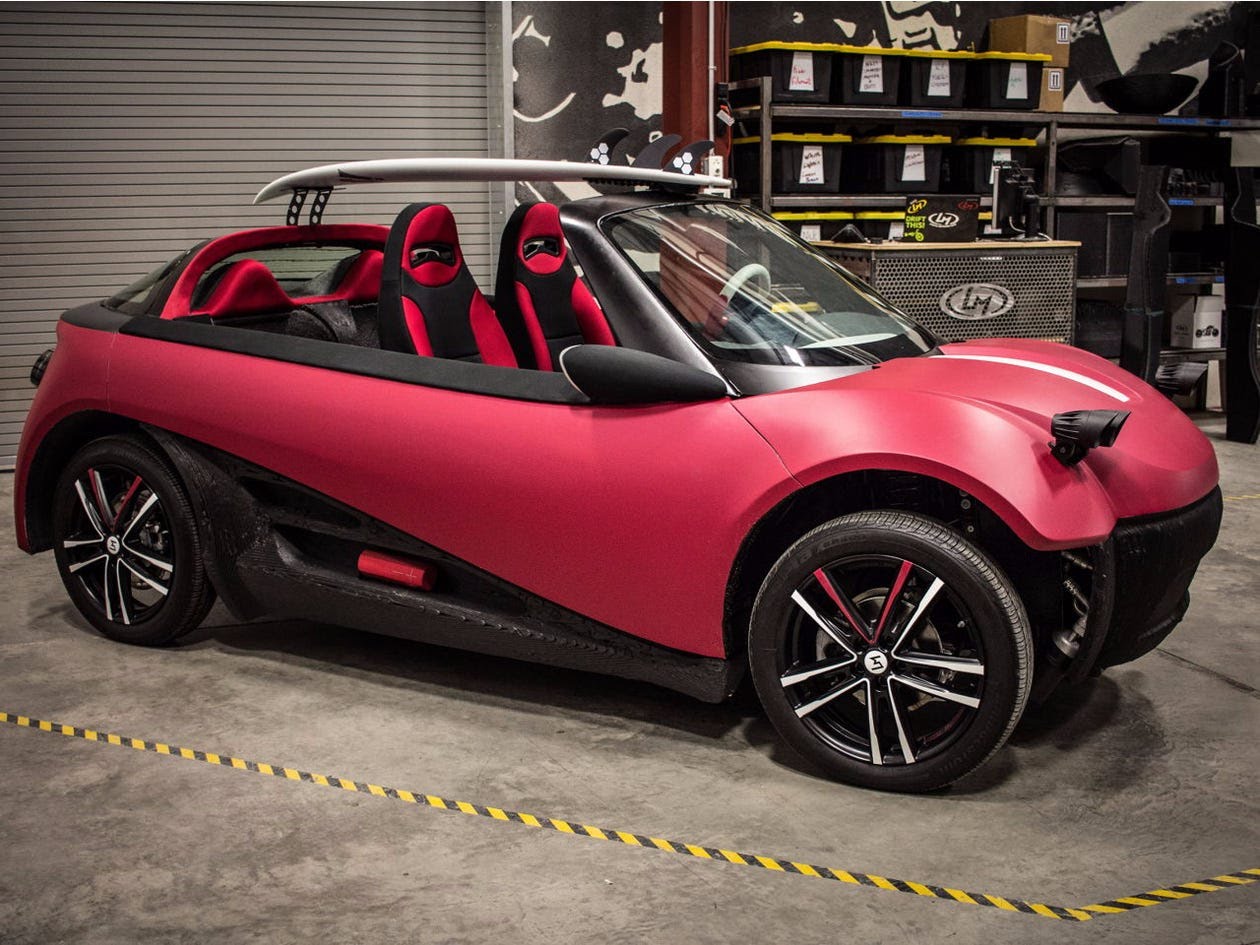When was the last time you used a phonebook, newspaper or other print media to research or locate a company? How about your friends or family? When was the last time they used a phonebook or newspaper? Odds are you really had to think back to come up with an answer to those questions because most of us are turning to the internet for directory listing, market research and reviews. There are over 6 billion searches conducted on search engines daily. Yes. You read that right. 6. BILLION! Research studies continue to demonstrate the growing importance of having an online presence as consumers continue to use the internet more and more to find what they need.
One Google Search can mean a new customer
After years of going to the same hair salon, my wife had grown dissatisfied with her stylist. She wasn’t sure where to go, so she asked for a few recommendations on social media, which turned out to be too expensive or the salon didn’t have a time slot that would fit her busy work schedule. She then turned to Google and did a local search for hair salons in town. She found a few familiar names of places that had been recommended to her but she also found a few locations she hadn’t heard of yet. One by one she visited their websites, comparing their hours, pricing, if available, and hair demos of previous clients. She then made a choice based on the results she found AND the comparisons she made using the hair salon’s website! And you know, she’s been a regular customer ever since. One simple Google search turned into a long-term customer for this hair salon. How many customers could your business gain with an online presence? How many customers are you losing because you don’t have a website?
About half of U.S. Businesses don’t have a website
Yes. That’s right. Despite the growing number of computer, smart phone and mobile device internet usage, some businesses still don’t see the value in having an online presence. In a survey conducted by CNBC, 45% of entrepreneurs stated that they did not have a business website. Some businesses rely on Facebook pages for their online presence, considering themselves too small to have a website or short on budget to invest in one. But a quick look at any restaurant, shopping mall or public arena and you are sure to see countless individuals on their phones using the internet. Many businesses are missing out on potential leads simply because they don’t have a website. Are you looking for a sure fire way to beat some of your competition? Start with a website. Some of your competitors don’t even have a website, so they can’t be found.
Websites play a role of trust in business
Trust. It’s the cornerstone of any relationship. It’s especially true in business relationships. No one wants to spend money with a company they don’t trust. If your business doesn’t have a website, consumers are less likely to trust you as being the real deal. In a study performed by Verisign, 84% of consumers believe that a business with a website is more credible than a business without one. This means that if a consumer happens to find your business in a white pages listing or maybe even a social media page, if you don’t have an actual website for your company, they are going to have trust issues with your brand and will take their business to your competitor instead. Don’t let your competitors take your business because you don’t have a website!
A website will promote your company 24/7
A website will communicate your brand consistently over and over again. A website can provide hundreds of consumers with your company information all at the same time. A website can promote your website at any given location, place or time. A website is your most loyal employee because they never quit and will always work 24 hours a day, 7 days a week, 365 days a year. A websites sole purpose is to talk to your customers and tirelessly promote your business. No employee will do that.
Yikes! I need a website for my business
Yes you do! Having a website is an integral part of your business strategy. Aside from the benefits we’ve mentioned above, marketing is the most important one. There are lots of ways to advertise your products or services. Printed materials such as business cards, magazine ads and flyers are easily misplaced. TV and radio commercials have a time limit and air at preset times. A website provides a permanent location, with infinite possibilities for the information it can convey.
Still not convinced?
From driverless cars to robotic workers, the future is going to be here before you know it.
Many emerging technologies that you hear about today will reach a tipping point by 2025, according to a recent report from The World Economic Forum’s Global Agenda Council on the Future of Software & Society.
The council surveyed more than 800 executives and experts from the technology sector to share their timeline for when technologies would become mainstream.
From the survey results, the council identified defining moments, all of which they predict will occur by 2030.
Here’s a look at the technological shifts you can expect during the next 10 years.
1 trillion sensors will be connected to the internet by 2022.
Welcome to the internet of things.
As the cost of sensors continues to decline and computing power increases, all kinds of devices will increasingly become connected to the internet. From the clothes you wear to the ground you walk on, everything will come online.
And as early as 2022, its predicted 1 trillion sensors will be connected
According to the report “every (physical) product could be connected to ubiquitous communication infrastructure, and sensors everywhere will allow people to fully perceive their environment.”
10% of the world’s population will be wearing clothes connected to the internet by 2022.
Cars, appliances, and other everyday objects are increasingly becoming more connected to the internet. And not too long from now, even the clothes on our back will get a connection.
By 2022, experts predict that 10% of people will be wearing clothing with embedded chips that connects them to the internet.
This isn’t really too surprising seeing as a number of accessories—including watches and rings— are already becoming connected. According to the research firm Gartner, about 70 million smartwatches and other bands will be sold in 2015 alone.
The first 3D printed car will be in production by 2022.
3D printers are increasingly becoming more powerful, capable of printing complex objects from all kinds of materials. Many car companies are already using the technology to create prototypes and to more efficiently create specific parts of a vehicle.
Most recently, Audi showed off a miniature sized vehicle it created using its metal printers.
But the automotive startup Local Motors is aiming to begin production on a full size car using 3D printing in the next few years. The company has already created several prototypes, and began taking orders for its production model (shown below ) in 2016.
The first implantable mobile phone will become commercially available in 2025.
Being attached to your smartphone may take on a whole new meaning by 2023.
About 80% of respondents predict that in seven years the first implantable mobile phone will become commercially available.
The device will potentially be able to track a person’s health more accurately, while also allowing them to communicate thoughts via brainwaves or signal instead of verbally, according to the report.
Implantable health devices, like pacemakers and cochlear implants, have already become more mainstream. And it’s likely we’ll see more widespread adoption of implantable technologies emerge before 2025.
The first government to replace its census with big-data technologies by 2023.
As collecting, managing, and understanding data becomes easier, governments may move away from old methods of collecting information and begin to rely more on big data technologies to automate programs.
According to the report, this is going to happen sooner than later. More than 80% of respondents estimate that the first government will replace the census with big-data systems by 2023.
Some countries, including Canada, have already began experimenting with pulling back on traditional census methods, however, no country has completely replaced the system yet.
10% of reading glasses will be connected to the internet by 2023.
Interacting with the world around you will become a lot different when connected glasses become more common.
Eighty-six percent of survey respondents predict connected eye wear will become common by 2023. The technology will allow the wearer to have direct access to internet applications will enable an enhanced or augmented reality experience. Eye tracking technology will also enable them to control the interface with their vision.
Google, of course, has already introduced similar technology with its Google Glass and is currently working on connected contact lenses.
80% of people on earth will have a digital presence online by 2023.
More people will gain a digital identity as internet connectivity becomes more prevalent.
Respondents estimate that by 2023 more than 80% of the global population will have a digital presence.
According to the report “…digital life is becoming inextricably linked with a person’s physical life,” and will only continue to grow in importance.
Companies like Facebook and Google are pushing this effort ahead with various projects to connect remote parts of the world to the internet.
A government will collect taxes for the first time via blockchain 2023.
Digital currencies, like Bitcoin, use a mechanism called the blockchain to perform transactions. The blockchain is essentially a shared public ledger that everyone can inspect and no single person controls. Those using the system keep it up to date to continuously keep track of transactions.
The blockchain technology, though, holds promise beyond Bitcoin. Some have proposed using the technology for public databases, like titles to land or other goods. According to recent article from the Economist, the NASDAQ is even about to start using the technology to record trading in securities of private companies.
Blockchain technology is expected to reach its tipping point in the next few years and by 2023 its predicted that the first government will collect taxes using the technology.
90% of the global population will have a supercomputer in their pocket by 2023.
Around the world people are increasingly using their smartphones more than PCs, and in developing nations people are becoming connected to the internet for the first time via their mobile phone. As smartphones gain computing power and the price continues to fall, the speed of adoption will only accelerate.
The number of global smartphone subscribers is estimated to reach more than 50% penetration by 2017 and by 2023, about 90% of the population will be connected via smartphone.
Access to the Internet will become a basic right by 2024.
According to the survey, 79% of respondents predict that by 2024 most of the world will have regular internet access.
Tech giants like Google and Facebook are currently coming up with creative solutions to connect the remaining 4 billion people who don’t have access to the internet.
Facebook’s Internet.org is using drones to beam internet down to Earth from satellites and Google’s Project Loon is using giant balloons that float in the atmosphere to connect remote parts of the world.
The first transplant of a 3D printed liver will occur 2024.
3D printers are already increasingly used in the healthcare industry to create human parts, like bone replacements and organ implants.
Doctors have already used 3D printing to create part of a patient’s rib cage and other bone implants. But bioprinting, which combines bioengineering with 3D printing, will also enable researchers and others in the healthcare industry to grow useable artificial organs.
More than 50% of Internet traffic to homes will be from appliances and device by 2024.
As more sensors are deployed and more products become connected to the internet, we will see a big shift in internet traffic.
Currently, most of the internet traffic in home is for personal consumption, whether it be for communication or entertainment. But by 2024, about half of the internet in the home will be used for home automation purposes.
5% of consumer products will be 3D printed.
3D printing, also know as additive manufacturing, has already made a lot of inroads with designers and in the manufacturing industry.
But as the printers become less expensive, more powerful, and easier to use, consumers will also increasingly adopt the technology. This will enable them to print things at home on demand.
Demand for the technology has already grown more than it was expected. In 2014, there were 133,000 3D printers sold worldwide, which was a 68% increase from 2013.
30% of corporate audits will be performed by artificial intelligence 2025.
AI will increasingly replace a range of jobs performed by people today, including white collar jobs.
Because artificial intelligence is so effective when it comes to matching patterns and automating processes, it’s well suited to perform many tasks in large organizations, according to the report.
According to an recent research from the McKinsey Global Institute, about 45% of activities people are paid to perform can be automated by adapting current technologies. This represents about $2 trillion in annual wages in the US. Furthermore, it’s not only low-income, low-skill workers that will be at risk.
According to the McKinsey research, “even the highest-paid occupations in the economy, such as financial managers, physicians, and senior executives, including CEOs, have a significant amount of activity that can be automated.”
By 2025, AI used in white collar jobs is expected to reach a tipping point and about 30% of corporate audits will be performed by AI.
Globally, more trips will be made using car sharing programs than privately owned cars by 2025.
The sharing economy has taken off in a big way during the last few years thanks to online marketplaces and mobile apps, but perhaps the best example of the sharing economy in action is in the transportation sector.
Services like Uber, Lyft, and Zipcar have changed how people think about transport and car ownership. It’s also forced auto manufacturers to rethink their business models.
And by 2025, 67% of respondents predict that the sharing economy will have grown to the point that more rides taken globally are actually via a car sharing service and not by a privately owned car.
Driverless cars will account for 10% of all cars in the US.
Autonomous cars have the potential to dramatically increase safety, decrease emissions, and change models of transportation.
Tech companies like Tesla, Google and Uber, as well as traditional automakers like Toyota, General Motors, and Volkswagen are all working on self-driving cars. But respondents predict that it will be 2026 before 10% of all cars are driverless in the US.
The first AI machine will join a corporate board of directors 2026.
Artificial intelligence will increasingly play a more important role in the business world as a decision making tool.
Because AI can learn from previous situations, it can provide insight and automate complex decision process based on data and past experiences. This means that the robots won’t just replace low-wage, low-income jobs. As AI and robotics evolve, we will see more white-collar jobs also begin to be replaced.
According to the survey, the technology will be to the point that the first AI machine will become part of corporate board of directors by 2026.
The first robotic pharmacist will arrive in the US 2021.
Robots already have a big presence in the manufacturing industry, but as they become more advanced we will see them enter new service oriented jobs.
In fact, respondents predict that by 2021 we will even have first robot pharmacist in the US.
The first city with more than 50,000 people and no traffic lights will come into existence by 2026.
Infrastructure will also become more connected in the future, giving way to more smart cities. Everything from the sidewalk and streets to the traffic lights and buildings will be connected to the internet.
Smart cities, like a smart home, will be automated capable of managing their “energy, material flows, logistics and traffic,” according to the report.
The evolution of connected infrastructure will bring about the first city with a population of 50,000 people and no traffic lights by 2026, according to the report.
10% of global gross domestic product will be stored using blockchain technology 2027.
As blockchain technology take off, more money will be stored using the technology.
According to the report, By 2027, about 10% of the global GDP will be stored using blockchain.
BINGE ON THE WORLDS MOST INTERESTING ENTERTAINMENT CONTENT FOR FREE NOW
Sources Business Insider, Navii






